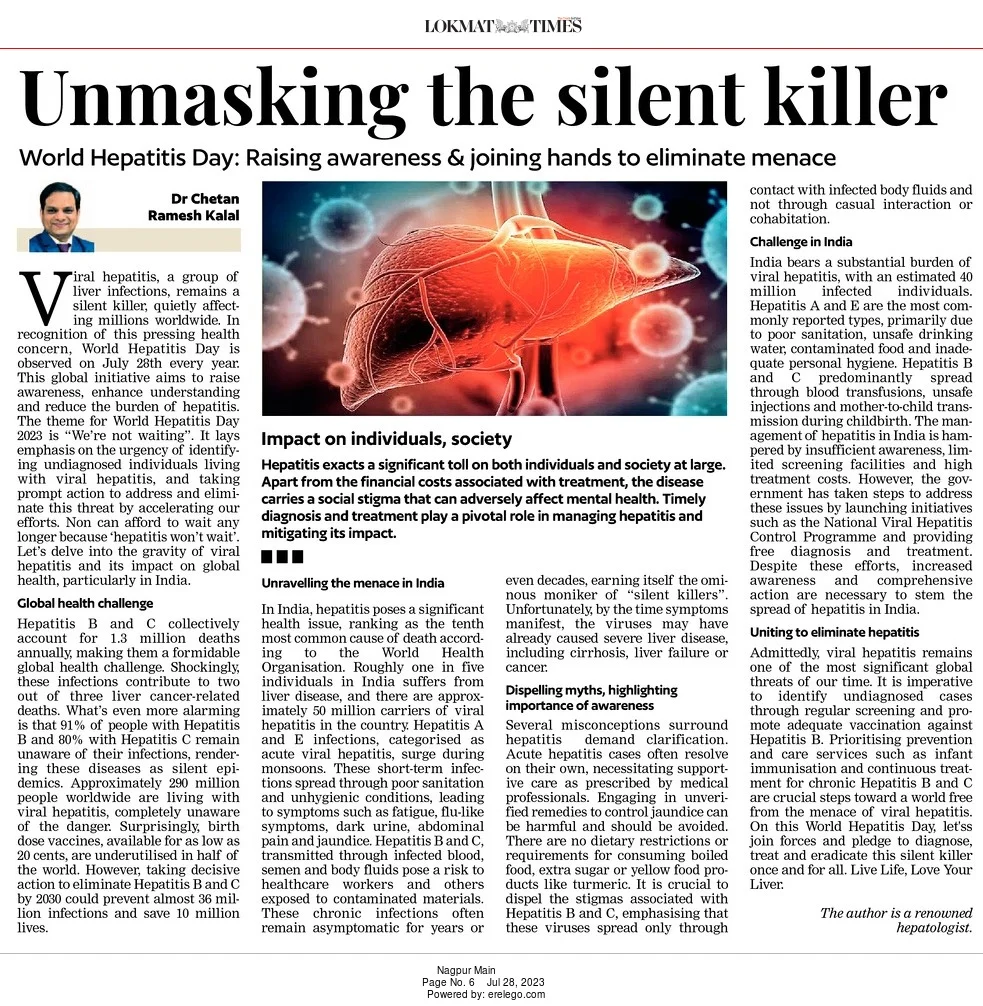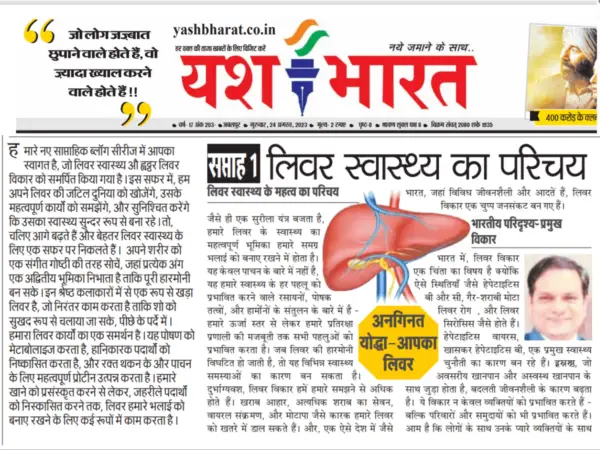new article
Fatty liver and pregnancy: Understanding the risks
Typically occurring during the third trimester, acute fatty liver of pregnancy is a potentially life-threatening condition caused by the sudden deposition of fat within the liver cells Written by Adithi PH With quotes from Dr. Neelima Thoppa Kapali (gastroenterologist), Dr Chetan Ramesh Kalal (hepatologist) Acute fatty liver of pregnancy (AFLP) is a severe complication that typically occurs in the third trimester of pregnancy. While it is rare, experts list this condition as one of the most serious pregnancy-related health emergencies. Dr Chetan Ramesh Kalal, DM hepatologist and program director, adult hepatology and transplant medicine center for liver, pancreas, and intestine transplantation, Nanavati Max Super Specialty Hospital, Mumbai, explains that AFLP is the sudden deposition of fat within liver cells, leading to liver dysfunction and ultimately liver failure. The condition, also known as acute yellow atrophy of the liver, can be life-threatening to both the mother and the fetus. What causes AFLP? Professor Dr Neelima Thoppa Kapali, HOD, gastroenterology and liver transplant surgeon, Fortis Malar, Chennai, says that the condition is caused by complications in the metabolism of fatty acids during pregnancy, and can be difficult to predict. The exact nature of the cause of AFLP is yet to be ascertained. However, some of the recent research indicates that it could be due to mitochondrial dysfunction during the breakdown of fatty acids. Dr Kalal points out that one of the enzymes vital for fatty acid breakdown would be missing, leading to excess fat deposition. He also adds that hormonal balance during pregnancy could also have a role in the manifestation of this condition. “Hormones like estrogen and progesterone undergo substantial fluctuations, which can affect various metabolic processes, including fat metabolism. They can lead to the fat deposition and sudden worsening of liver function,” Dr Kalal adds. The normal fat content in the liver should be around five percent. However, in women with AFLP, it goes up to as high as 13 to 19 percent. This excess fat deposit, along with ammonia produced by hepatocytes (liver cells involved in lipid breakdown), are the main factors that lead to liver failure. Precautions Dr Kapali explains that pregnancy itself causes major changes in a woman’s body. Hence, it is vital to cut alcohol consumption, keep weight in control, and have a well-balanced diet with healthy food. The person should be safer and monitor themselves during pregnancy and keep the liver healthy to avoid acute liver problems. Dr Kalal also points out that the most important measure is regular prenatal care. Regular checkup allows the doctor to monitor the health of both the mother and fetus. Further, avoiding recreational drugs and substance abuse is crucial. Adequate rest, stress management, prompt medical attention and early detection can also make a significant difference. Does AFLP affect the fetus or baby? “Depending on the month of the third trimester in which it occurs, AFLP can have varying impacts on the baby,” informs Dr Kapali. Premature delivery caused by earlier occurrences, such as in the seventh month, can result in severe underdevelopment of the newborn child. In addition, Dr Kalal highlights that the fetus should be typically observed for hypoglycemia (low sugar). “Due to a defect in fatty acid metabolism, the fetus is predisposed to low sugar and seizures,” he says. So, we need to be very vigilant and monitor them. Treatment for acute fatty liver of pregnancy Early detection and prompt medical intervention are crucial in ADLP. Dr Kalal explains that once the person is diagnosed, there should be continuous monitoring of both the mother and the fetus. The only treatment is urgent childbirth. “AFLP resolves after childbirth, and the mother’s health returns to normal,” explains Dr Kapali. He adds that delivery is crucial because liver dysfunction can lead to respiratory and kidney problems, which can be fatal for both the mother and baby. “Most of the cases can be handled with adequate medical care, early diagnosis, and prompt delivery,” shares Dr Kalal. But he adds that in some cases if acute fatty liver of pregnancy is diagnosed too late and liver failure occurs, the pregnant woman might require a liver transplant. Takeaways Acute fatty liver of pregnancy is a rare but severe condition. It is usually seen in the third trimester. Jaundice is a common symptom of the condition. Once diagnosed, both the mother and the fetus should be continuously monitored. It could be fatal to the mother and the baby, and immediate childbirth is the only treatment. It is important to maintain a healthy lifestyle, especially during pregnancy, and keep the liver healthy to avoid complications.
Fatty liver and pregnancy: Understanding the risks Read More »
As COVID Surged, India Had a Silent Outbreak of Giloy-Induced Liver Injury
The Indian government has embarked on a no-holds-barred giloy promotion spree in the last two years, through the AYUSH and health ministries. According to doctors, giloy is forbidden for people who suffer from autoimmune disorders, and can lead to death if it is consumed in sufficiently large quantities. But no government agency has warned that people with autoimmune disorders should avoid giloy – a reckless position exacerbated by uncritical media coverage. New Delhi: The Ministry of AYUSH published a statement on February 16, 2022, on giloy – a plant that features in many Ayurvedic recipes. The ministry, and the Indian government by extension, has widely publicised this herb as an “immunity booster” during the COVID-19 pandemic. “Certain sections of the media have falsely linked … giloy/guduchi with liver damage,” the ministry statement read. “The Ministry of AYUSH reiterates that giloy/guduchi (Tinospora cordifolia) is safe and as per available data, guduchi does not produce any toxic effect.” Curiously, there have been no recent media reports criticising giloy. The most proximate event The Wire Science could find was a list of questions The Wire Science had sent to the Ministry of AYUSH, seeking its response to a study that had criticised the willy-nilly consumption of giloy as an “immunity booster”. Nonetheless, several media outlets reported the statement, many verbatim. Some people consume the herb raw. Others prefer Ayurvedic ‘preparations’ in the form of capsules, powders or juices. Whenever giloy has propped up in a negative context in the past, the AYUSH ministry has been quick to issue a statement defending it. The first such release appeared on July 7, 2021. It was responding to a scientific study published in the Journal of Clinical and Experimental Hepatology on July 2. The study revealed that the mindless consumption of giloy was contributing to liver toxicity, specifically drug-induced liver injury (DILI). The study’s findings were based on detailed case studies of six people who had consumed giloy and developed DILI. According to the study paper: “Tinospora cordifolia (giloy) consumption seems to induce an autoimmune-like hepatitis or unmask an underlying autoimmune chronic liver disease, which may support its immune stimulant mechanism. However, the same mechanism can cause significant liver toxicity, and we recommend that caution be exercised in the use of this herb, especially in those predisposed to autoimmune disorders.” The government’s immediate reaction was to completely dismiss the study. In its statement, the AYUSH ministry said: “The authors of the study have not analysed the contents of the herb that was consumed by the patients… In fact, there are many studies that point out that identifying the herb not correctly could lead to wrong results. A similar looking herb Tinospora crispa might have a negative effect on the liver.” That is, the government wanted to know if the authors knew whether the six people had consumed Tinospora cordifolia or Tinospora crispa. The latter is poisonous. The ministry suggested the researchers consult an expert in botany. It’s a known fact that the two plants are impossible to tell apart with the naked eye. Even Ayurveda experts can’t do so. And both are available in the market, often labelled ‘giloy’. More than six months after the study was published, The Wire Science spoke to Dr Aabha Nagral, one of the study’s authors and a senior hepatologist . She said that of the six patients, four had consumed the raw herb: “Our follow-up research has proved that the four consumed Tinospora cordifolia only,” she said. Dr Nagral also said she and her colleagues will soon be publishing a paper that demonstrates this fact: that the patients in question didn’t consume a known poisonous substance, yet suffered liver toxicity. “The two others had taken giloy as part of a concoction of immunity-boosting products from two popular companies,” she added. “So legally, those companies couldn’t have mixed the poisonous form.” Update, November 14, 2022, 10:24 am: Abha Nagral’s findings, which she had shared with The Wire Science in February 2022, were published by the Journal of Clinical and Experimental Hepatology on November 6. A botanical analysis plus other studies confirmed that all their study subjects who had suffered serious liver injuries had indeed consumed Tinospora cordifolia and not Tinospora crispa. A Hyderabad-based hepatologist also said he has encountered many such patients in the last two years. “Forget about these researchers – do I tell a patient who comes to me with DILI symptoms to bring the herb on the next visit? Even if she does, how am I supposed to distinguish between the two forms?” he asked. He didn’t wish to be named because he feared reprisal by the Ayurveda industry. “We are trolled on social media. We are served legal notices just for speaking our minds. It is too much trauma to take,” according to him. Indeed, it wasn’t just the ministry that went after Dr Nagral and her colleagues. The journal’s editor also received numerous letters from Ayurveda medical colleges and companies manufacturing supposedly Ayurvedic drugs. These included the Patanjali group; the JSS Medical College, Mysore; the State Ayurvedic College, Lucknow; and the All India Institute of Ayurveda, Delhi. They all case doubt on the research paper on various pretexts. The most common argument was “giloy has traditionally proven safe”. The Ayurveda proponents also claimed that a thyroid drug or a fungal infection could have caused the toxicity. The journal published all these responses. At the same time, many hepatologists reported to the same journal that they were seeing patients with DILI after they had consumed giloy. Also read: Face It: The Indian Government Is Peddling Pseudoscience Sandeep Kumar, 32, is a resident of Simariya village in Ambedkarnagar district, Uttar Pradesh. His family of eight consumed giloy as kaadha during the second wave of India’s COVID-19 outbreak. His father, aged 58, took it everyday, first thing in the morning. He was diabetic and had high blood pressure. “We had read in a newspaper that giloy was good at preventing coronavirus infections,” Kumar told The Wire Science. “Our neighbours also took it.” Two months later, his father developed jaundice and was admitted to King George’s Medical University (KGMU), Lucknow, and soon after died there. Doctors told Kumar that his father died due to excessive consumption
As COVID Surged, India Had a Silent Outbreak of Giloy-Induced Liver Injury Read More »











